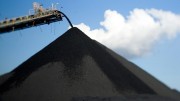The following is an edited excerpt from the World Steel Association’s (worldsteel) “Short-range outlook for 2014 and 2015.” It forecasts that global apparent steel use will increase by 2% to 1,562 million tonnes in 2014 after 3.8% growth in 2013. In 2015, it is forecast that world steel demand will grow by another 2%, and reach 1,594 million tonnes.
Chairman of worldsteel Economics Committee Hans Jurgen Kerkhoff said that “the positive momentum in global steel demand seen in the second half of 2013 abated in 2014, with weaker-than-expected performance in the emerging and developing economies. As a consequence we are issuing a lower steel-demand growth figure than our forecast released in April this year. The slowdown in China’s steel demand — reflecting the structural transformation of the economy — has contributed significantly to our lower global growth projection. We have also seen a major slowdown in South America and the CIS countries due to falling commodity prices, structural constraints and geopolitical tensions. In contrast, the developed economies fared well this year. Recoveries in the European Union, U.S. and Japan are expected to be stronger than previously thought, but not strong enough to offset the slowdown in the emerging economies. In 2015 we expect moderate steel-demand growth in developed economies, while we project growth in the emerging and developing economies will pick up. In China rebalancing will drag steel demand.
“This outlook is prone to risks coming from various fronts. The U.S. interest-rate increase expected in 2015 will likely impact global capital flows, creating instability in the vulnerable emerging markets. At the same time the outlook in emerging markets is constrained both by the need for structural reforms and geopolitical tensions, and as a result global energy prices have emerged as a risk factor. In China, the rebalancing and transition towards a consumption-driven economy is not without challenges and uncertainties. Lastly, the recovery in the Euro-area is still constrained by household and government deleveraging.”
Apparent steel use in China is expected to slow to 1% growth in 2014, or 748.3 million tonnes, with rapid cooling of the real estate sector, as government efforts to rebalance the economy curtails investment and weakens business sentiment. The weak growth will continue into 2015, and China’s steel apparent steel use will grow by 0.8% to reach 754.3 in 2015. However, possible use of targeted stimuli and less restrictions on the real estate market in response to slower gross domestic product growth could increase the forecast.
India’s outlook is improving after the election of a new government, which is promising pro-business reforms. In 2014, India’s steel demand is expected to grow by 3.4% to 76.2 million tonnes in 2014, following 1.8% growth in 2013. In 2015 structural reforms and improving confidence will support a further 6% growth in steel demand, but elevated inflation and fiscal consolidation remain key downside risks to the outlook.
After a minus 0.4% decrease in apparent steel use in 2013, U.S. steel demand is seen increasing by 6.7% to 102.2 million tonnes in 2014 — a large upward revision, helped by strong growth in the automotive and energy sectors. Steel demand is expected to increase by 1.9% in 2015. The European Union recovery has gained momentum in 2014, and steel-demand outlook has improved considerably to grow by 4% to 145.9 million tonnes, after increasing by 0.8% in 2013.





Be the first to comment on "Commentary: Steel demand cools"